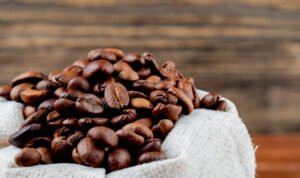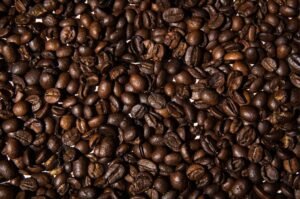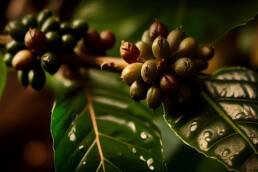If you enjoy drinking coffee, you may have pondered how many various kinds there are and what makes each one special. We’ve got the answers!
Coffee beans come in four varieties: Arabica, Robusta, Liberica, and Excelsa. Arabica and Robusta are the most prevalent (and well-liked), but you might get lucky and come across the other two. Learn more about these tasty beans and useful buying advice by reading on.

Arabica coffee beans are the most popular variety worldwide, native to Ethiopia but grown in several countries throughout the world with tropical climates and high altitudes. Dark brown in color and smooth to the touch, the Arabica bean develops a diverse flavor profile ranging from slightly sweet and fruity to nutty when roasted.
Arabica beans are considered the most high-quality variety and can be found in most places where coffee beans are sold, from the local supermarket to your favorite coffee shop. The popularity and versatility of the Arabica bean make it a great choice for many recipes that call for coffee beans, from freshly brewed coffee to coffee cakes.
 Robusta coffee beans are the second most popular type, with a noticeably bigger and more rounded shape. Robusta beans are still mostly grown in Africa, Indonesia, and India today despite being native to sub-Saharan Africa. Robusta beans have a richer, more bitter flavor profile with undertones of wood and nut when compared to Arabica beans.
Robusta coffee beans are the second most popular type, with a noticeably bigger and more rounded shape. Robusta beans are still mostly grown in Africa, Indonesia, and India today despite being native to sub-Saharan Africa. Robusta beans have a richer, more bitter flavor profile with undertones of wood and nut when compared to Arabica beans.
Because of this bitter flavor, Robusta beans are commonly used in coffee blends and are less likely to be found on its own, with the exception of instant coffee or espresso beans. The bold notes in this coffee can stand up to the additions of cream, steamed milk and other flavorings.
Unless you’re a coffee connoisseur, you’ve maybe never heard of Liberica Coffee, the more obscure, less popular bean, so let’s give you a little bit of background. These almond-shaped coffee beans, originating from Liberia, are especially popular in Asia and South America. Most commonly, they are used to make cheap, instant-style coffee, which is a suitable use considering the Liberica beans’ high caffeine content.
Liberica coffee is bold and smoky: a very distinct palette that isn’t to everyone’s taste. However, the strong, dark flavor still makes it a popular choice in some parts of the world.

In fact, Excelsa coffee is regarded as a member of the Liberica family and accounts for less than 10% of global production. The Excelsa bean differs from other Liberica beans, nevertheless, because of its flavor. The flavor profile of Excelsa coffee is distinctive and special. These beans have both the robust, rich flavor of a dark roast and the acidic, fruity attributes of a lighter roast. It has become a well-liked option for coffee aficionados all around the world because of its enigmatic flavor.
In conclusion, the world of coffee is rich and diverse, with each variety of bean offering its unique flavor profile and characteristics. Arabica, celebrated for its delicate flavors and complex aromas, remains the reigning champion in the world of specialty coffee, while robusta, with its higher caffeine content and bold, earthy taste, continues to play a crucial role in the production of espresso blends and instant coffee. The lesser-known Excelsa and Liberica, with their distinct and often underappreciated flavors, are gradually gaining recognition among adventurous coffee enthusiasts. Whether it’s the subtle nuances of Arabica, the boldness of robusta, the exotic charm of xcelsa, or the unique notes of Liberica, each coffee bean variety contributes to the colorful tapestry that is the global coffee industry, inviting us to explore and savor the diverse and intricate world of coffee.




